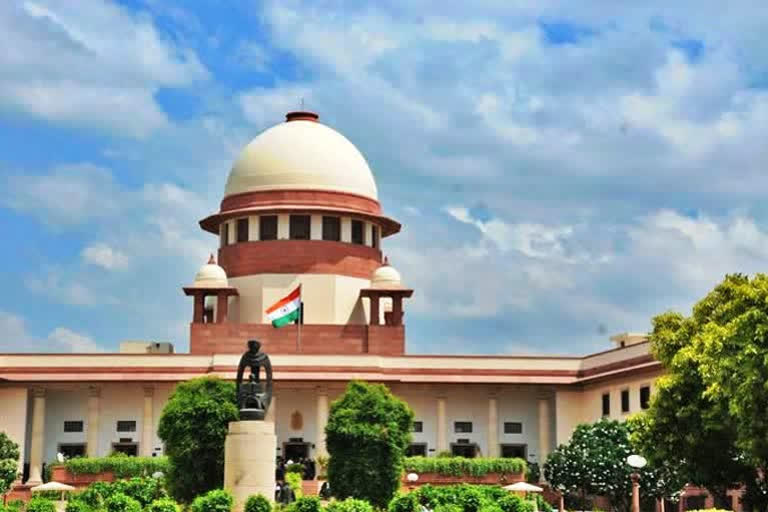New Delhi: A plea was filed in the Supreme Court on Thursday seeking transfer of two pleas from the high courts of Delhi and Rajasthan to it on the issue of ''Uniform Minimum Age of Marriage for Men and Women'' to "avoid multiplicity of litigations and conflicting views".
The Delhi High Court had in August last year issued notice to the Centre and the Law Commission of India on BJP leader and lawyer Ashwini Upadhyay''s plea seeking uniform marriage age for men and women.
On February 5 this year the Rajasthan High Court sought response from the Centre and others on a similar PIL filed by one Abdul Mannan.
Seeking an authoritative pronouncement and to avoid multiplicity of litigation, a fresh plea seeking transfer of these cases to the top court has been filed by Updhayay through his lawyer Ashwani Kumar Dubey.
The transfer plea has been filed in order to "secure gender justice, gender equality and dignity of women", the lawyer said.
Currently, various laws state that the minimum age for getting married should be 18 in the case of women and 21 for men.
"Petitioner is compelled to approach this Court as more PILs may be filed in other High Courts seeking ''Uniform Minimum Age of Marriage for Men and Women''. Therefore, in order to avoid multiplicity of the litigations and conflicting views on the interpretation of Articles 14, 15, 21 and judgments on gender justice and gender equality, the Court may be pleased to transfer these PILs and decide them collectively," said the transfer plea filed under Article 139A of the Constitution.
Alternatively, the plea has sought a direction to the Centre to take appropriate steps to remove the anomalies in the minimum age of marriage and make it ''gender-neutral, religion-neutral and uniform for all citizens'' in the spirit of the fundamental rights of equality and right to life and International conventions.
"Alternatively, being the custodian of the Constitution and protector of the fundamental rights, declare that the discriminatory minimum age of marriage offends Articles 14, 15, 21 and international conventions. Hence, the minimum age of marriage shall be 21 years for all citizens," it said.
Also read: 'Pakistan Interior Minister behind kidnapping of Sindh IGP'
While men are permitted to get married at the age of 21, women are married when they are just 18, it said.
"The distinction is based on patriarchal stereotypes, has no scientific backing, perpetrates de jure and de facto inequality against women, and goes completely against the global trends," it said.
The differential bar discriminates against women thus contravenes the fundamental principles of gender equality, gender justice and dignity of women and offend Articles 14, 15, 21 of the Constitution and international conventions, it said.
The petitioner said more than 125 countries in the world have a uniform age of marriage for men and women and the National Human Rights Commission, pursuant to the National Conference on Child Marriage held in New Delhi in August 2018, had also recommended that India follow suit.
It also referred to relevant provisions of the Indian Christian Marriage Act, the Parsi Marriage and Divorce Act, the Special Marriage Act, the Hindu Marriage Act and the Prohibition of Child Marriage Act and said that they are "responsible for this discriminatory bar".
Under section 60 of the Indian Christian Marriage Act, 1872, the age of the man intending to be married shall not be under 21 years, and the age of the woman intending to be married shall not be under 18 years, it said.
As per the Parsi Marriage and Divorce Act of 1936, the age of male has to be 21 years and a female has must complete 18 years of age, it said.
The other laws also have the same anomalies with regard to the age of marriage for male and female, it said.
Seeking transfer, the plea said, "The fundamental basis of the legal system is that the dispute should be finally settled and when the same/similar facts are placed in different petitions before different Courts for the judicial test, there is a likelihood of divergence of views, different interpretations and contradictory appreciation of the materials placed before such Courts and in such a case, the aspiration of litigants to find finality to the disputes may be reduced more to a mirage than reality."
PTI



